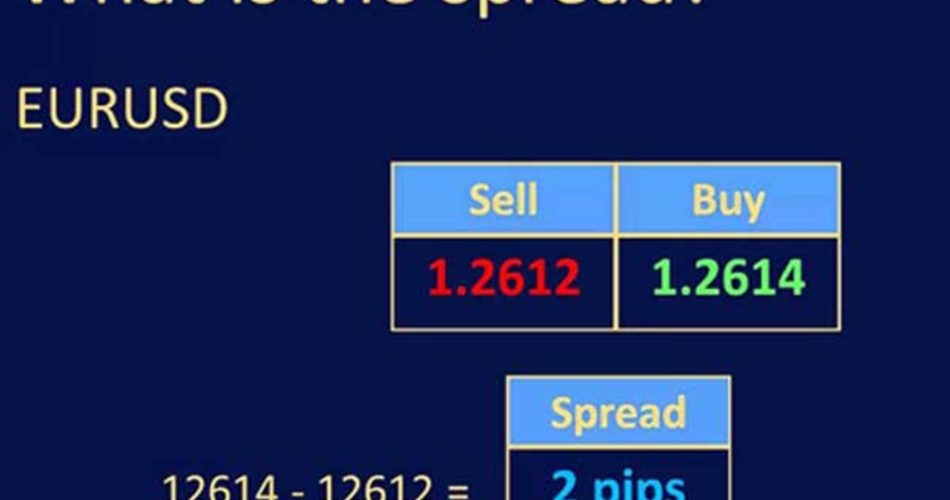Forex trading is a complex financial market where currencies are bought and sold in order to make a profit. One crucial aspect of trading in the Forex market is understanding spreads. Spread is a key concept that all traders must grasp in order to navigate the market effectively. In this article, we will delve into what spread in Forex trading is, its importance, factors that influence it, different types of spreads, how to calculate it, and strategies to minimize spread costs.
Understanding Spread in Forex Trading

Spread in Forex trading refers to the difference between the buy (ask) price and the sell (bid) price of a currency pair. It represents the cost of trading in the Forex market, as brokers make money by charging traders a spread. Essentially, it is the fee that traders pay to enter a trade. Understanding how spread works is essential for traders to make informed decisions and manage their trading costs effectively.
Definition and Importance of Spread

The spread is a crucial factor in Forex trading as it directly impacts the profitability of a trade. The tighter the spread, the lower the cost of trading, making it easier for traders to generate profits. A wide spread, on the other hand, can eat into profits and make it more challenging to make money in the market. As such, understanding and monitoring spreads is essential for successful trading in the Forex market.
Factors Influencing Forex Spread

Several factors can influence the spread in Forex trading. These include liquidity in the market, market volatility, time of day, and the trading platform being used. Major currency pairs tend to have tighter spreads due to their high liquidity, while exotic currency pairs often have wider spreads. Traders need to be aware of these factors and how they can impact the spread to make informed trading decisions.
Different Types of Spread in Forex

There are two main types of spreads in Forex trading: fixed spreads and variable spreads. Fixed spreads remain constant regardless of market conditions, providing traders with consistency in trading costs. Variable spreads, on the other hand, fluctuate according to market conditions, with spreads widening during periods of high volatility. Each type of spread has its own advantages and disadvantages, and traders need to choose the one that best suits their trading style.
Calculating Spread in Currency Trading

To calculate the spread in currency trading, traders need to subtract the sell price from the buy price of a currency pair. For example, if the EUR/USD pair has a buy price of 1.2000 and a sell price of 1.1995, the spread would be 0.0005 or 5 pips. Understanding how to calculate spread is essential for traders to gauge the cost of each trade accurately and make informed decisions.
Comparison Table: Fixed vs. Variable Spreads
| Aspect | Fixed Spread | Variable Spread |
|---|---|---|
| Cost | Consistent | Fluctuating |
| Advantages | Predictable trading costs | Tighter spreads in low volatility |
| Disadvantages | Higher costs in stable markets | Spreads can widen during high volatility |
Minimizing Spread Costs in Forex Trading

Traders can minimize spread costs by choosing brokers with competitive spreads, trading during times of high liquidity, and avoiding trading during volatile market conditions. Additionally, using limit orders instead of market orders can help reduce costs by ensuring trades are executed at a specific price. By implementing these strategies, traders can optimize their trading performance and profitability in the Forex market.
In conclusion, spread is a fundamental concept in Forex trading that all traders must understand to navigate the market successfully. By grasping the definition and importance of spread, being aware of the factors that influence it, knowing the different types of spreads, calculating it accurately, and employing strategies to minimize costs, traders can enhance their trading performance and profitability in the Forex market. Staying informed and proactive in managing spread costs is key to achieving success in this dynamic financial market.


I didn’t know spreads could affect profits so much. Thanks for explaining!
“Factors Influencing Forex Spread” section was very useful. Thanks!
Good breakdown of fixed vs variable spreads. Helps me decide which to choose.
‘Spread’ was confusing before, but this article cleared it up for me.
Understanding spreads better now. This will help my trading strategies a lot.
This article helped me understand what spread in Forex trading is. Very informative!
Great tips on how to minimize spread costs. Will definitely use them.